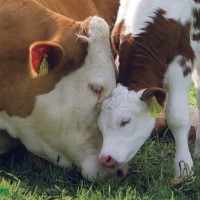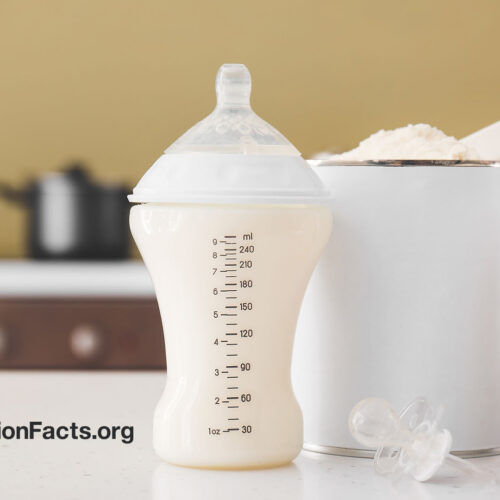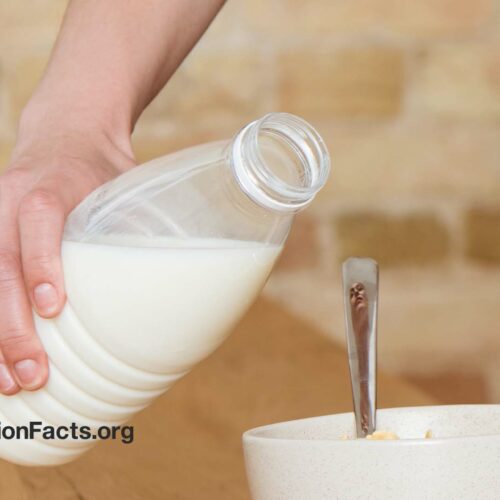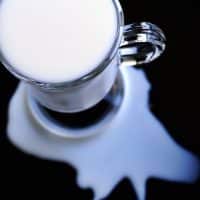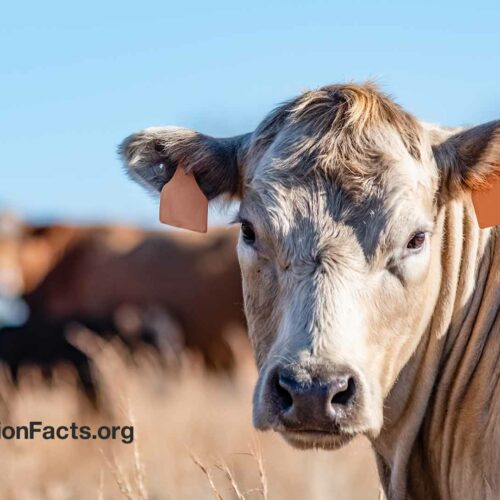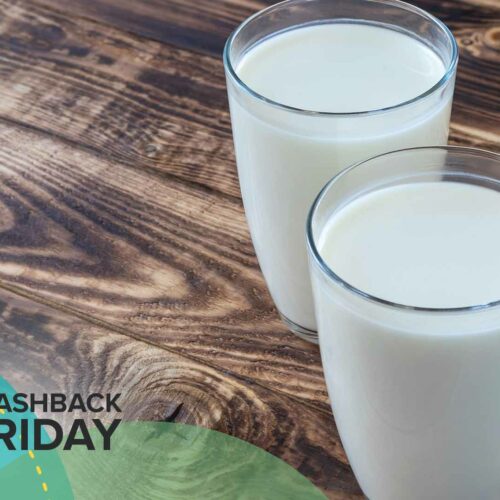Even those who test negative for cow’s milk allergy may have hypersensitivity reactions to dairy products.
Excessive spitting up and vomiting in infants may be treated by putting them down on their left side after meals—of course, never when sleeping. It’s always face-up to wake up to reduce the risk of crib death. Also, as I discuss in my video How to Treat Reflux in Children with Diet, you can try smaller, more frequent feedings, thickening or changing formulas, and in breastfed infants, which is ideally how all babies should be fed, eliminating cow’s milk and eggs from the mother’s diet.
You may recall that, in my video Treating Reflux in Babies with Diet, I talk about how more than 40 percent of infants with reflux can be successfully treated with cow’s milk removal. It can also affect them on the other end, too, as cow’s milk allergy can be a major contributor to diaper rash and also contribute to chronic constipation in 80 percent of affected kids. In one study, however, only a single kid tested positive for having an actual allergy to cow’s milk, so it seems to be a kind of sensitivity reaction that can really only be diagnosed by giving a cow’s milk-free diet a try. Anal fissures in infants may be practically pathognomonic for cow’s milk allergy, meaning so characteristic of the condition that it could be used as a diagnostic sign, with no allergy testing required.
It’s like when cow’s milk hypersensitivity was demonstrated in 10 of 17 children with severe reflux. In the majority of patients, the hypersensitivity to cow’s milk was identified only by eliminating it and then re-challenging to confirm. Researchers did endoscopies, measuring the acid that gurgled up before and after milk consumption, then verified by repeating milk exposure with double-blind placebo-controlled challenges when necessary. Yet, all but one of the children proven to have this adverse reaction to dairy tested negative on allergy tests. So, the kids tested negative for a cow’s milk allergy, but they still got better by cutting out the cow’s milk. “In conclusion, an association of cow milk hypersensitivity and severe GERD [reflux] was observed not only in infants but also in preschool/school children.”
Another disease that can be cured with cow’s milk elimination is eosinophilic esophagitis, a chronic inflammatory disorder of the esophagus, the tube that connects your mouth to your stomach. To figure out what’s causing the inflammation, an elimination diet is prescribed, where you basically remove everything, then each time you add back a food, doctors insert an endoscope down your throat and take biopsies to see if that particular food made things worse. How many freaking foods are there?! You can imagine how difficult, costly, invasive, confusing, and frustrating that may be for families. So, researchers at Northwestern figured why not just see what happens if you remove just one food from their diet instead of making them go through all that. Their finding? Eliminating cow’s milk induced remission in 65 percent of the children they tried it on. Normally, doctors would have to try to coat their patients’ throats with steroids to knock down their immune response. Doing so then sets the stage for infections like thrush, though, and of course, as soon as the steroids are stopped, the esophageal inflammation comes raging back because you aren’t treating the underlying cause. But steroids are considered the standard of care. Too bad there’s never been a head-to-head test of cow’s milk elimination versus steroids…until now.
As you can see in the graph below and at 3:40 in my video, researchers conducted a comparative effectiveness trial of cow’s milk elimination versus a swallowed steroid and found they both appeared to work just as well, which is to say the cow’s milk elimination worked better because there are no side effects and you’re treating the actual cause. They concluded, “Our results suggest that cow’s milk elimination is an effective treatment option that should be considered as a first-line therapy…”
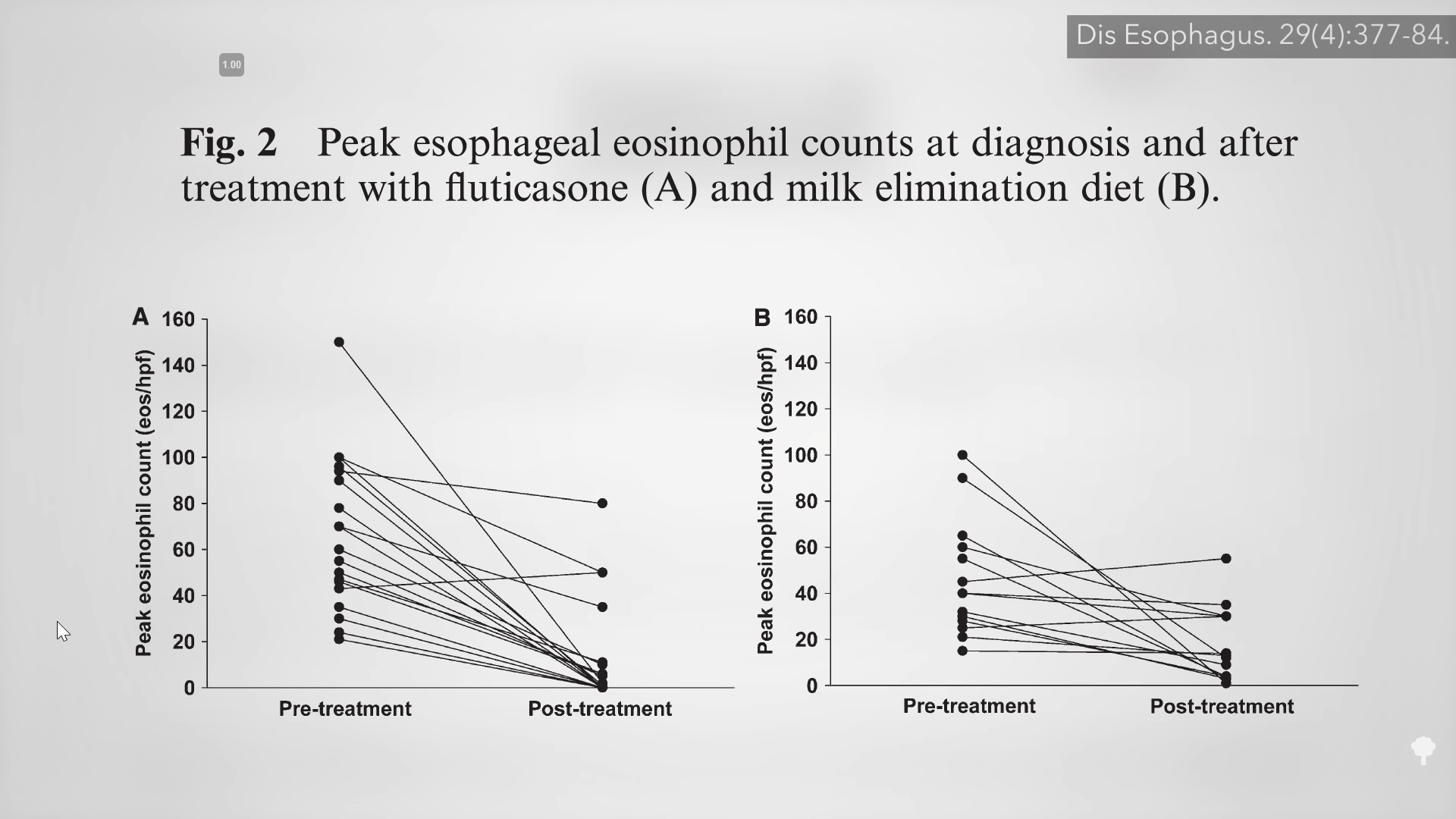
In adolescence, cow’s milk protein intolerance can contribute to chronic fatigue syndrome, evidently a common problem in young people with chronic fatigue and most importantly “a treatable contributor to their symptoms.” But again, most were unaware that dairy was a problem, possibly because it can take hours between milk ingestion and when you start feeling worse, so people don’t make the connection. So, even those who report no problems after milk ingestion may still be suffering problems after consuming dairy.
Finally, what about adults? Well, there’s lactose intolerance. Most people on Earth are lactose-intolerant after weaning, with the exception of some human populations that developed lactose tolerance about 10,000 years ago, thanks to a mutation in the lactase gene that enabled adult humans to digest lactose (milk sugar). As you can see below and at 4:53 in my video, they were mostly select European populations, whereas most Hispanics, Africans, and Asians remain intolerant, which may be a good thing, since acid regurgitation, reflux, and heartburn is so common among adults in the Western world. Food intolerance may play a role in adults as well. Milk was found to be the leading culprit, but researchers were using what’s called a leucocytotoxic test, where you see how someone’s white blood cells react to individual foods in a petri dish.
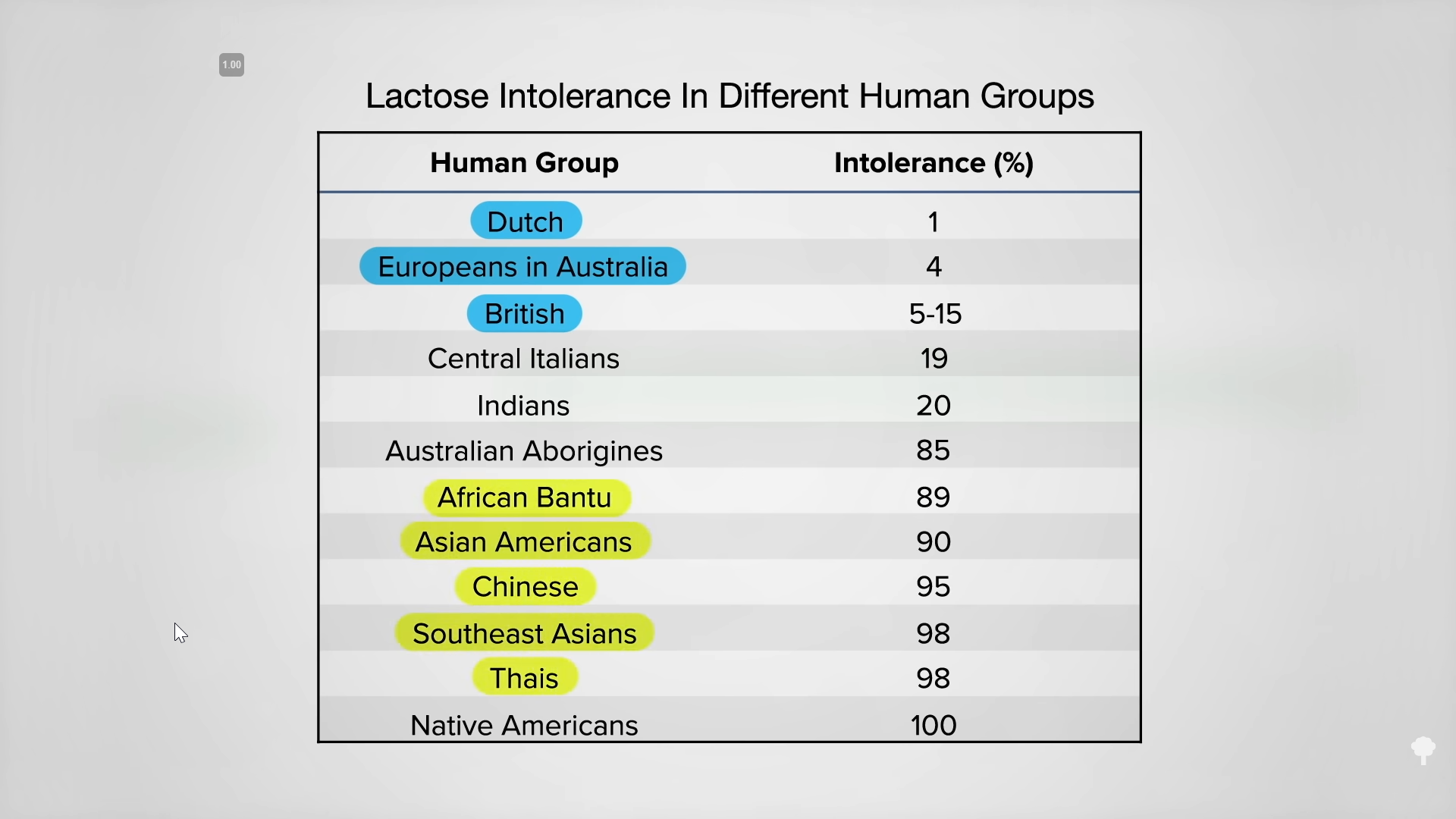
This test is frowned upon by professional allergy associations as not being sufficiently sensitive and specific. It can’t hurt, though, to put it to the test. A double-blind, randomized, controlled trial was performed in 38 reflux patients for which proton pump inhibitor drugs failed to completely control their symptoms. What happened when the diet was given a try? As you can see in the graph below and at 5:48 in my video, researchers randomized people to either a diet in which they excluded foods they tested sensitive to (most often dairy) or one that instead excluded foods for which they didn’t test positive to control for the placebo effect. A month later, the symptoms in the control group dropped, but the symptoms in the true diet exclusion group dropped significantly further. The researchers kind of felt bad for the control group, so they switched those participants to the right diet, too, and two months later, everyone was feeling better.
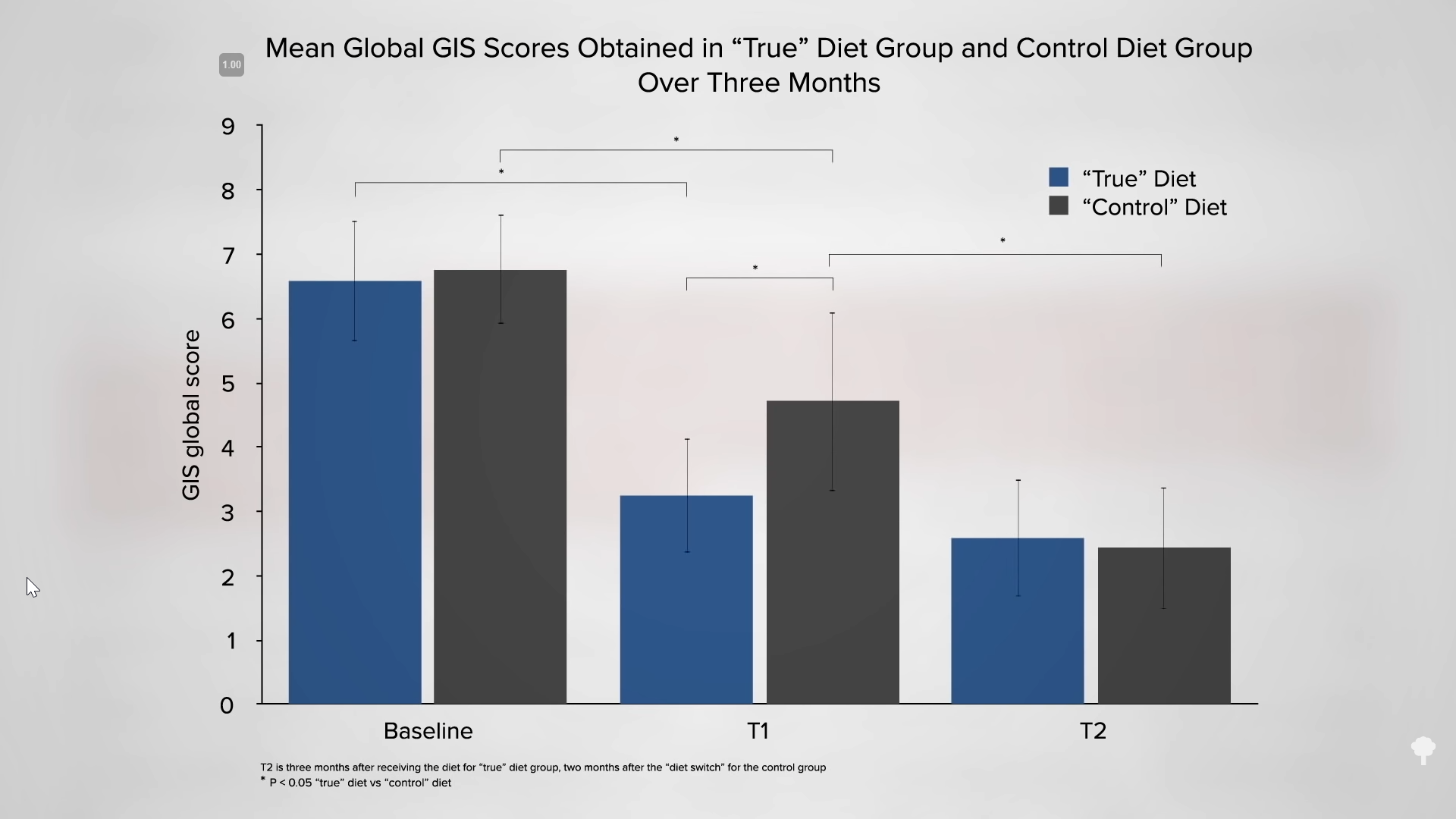
I covered the effects of maternal diets on breastfed babies in Treating Infant Colic by Changing Mom’s Diet and Infant Seizures Linked to Mother’s Spirulina Use. Breast is best, but you may also be interested in The Best Baby Formula and Formula for Childhood Obesity.
For more on dairy and child health, check out the Related Videos below.

